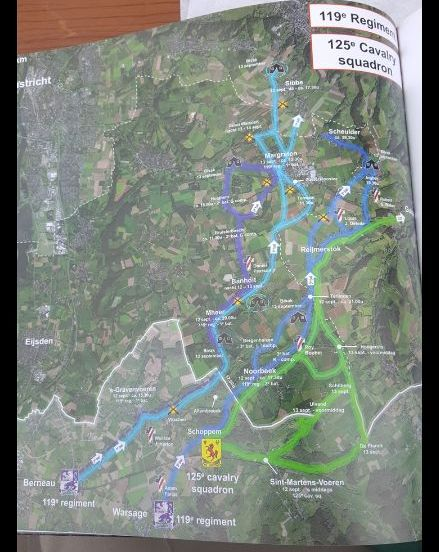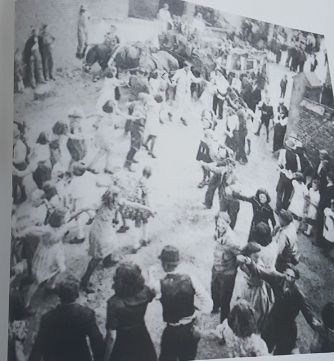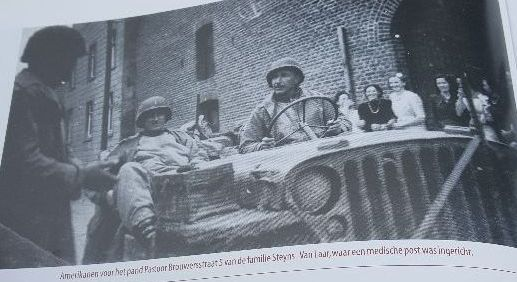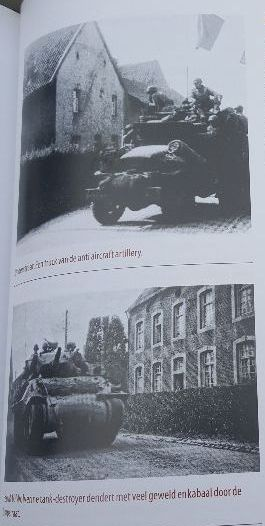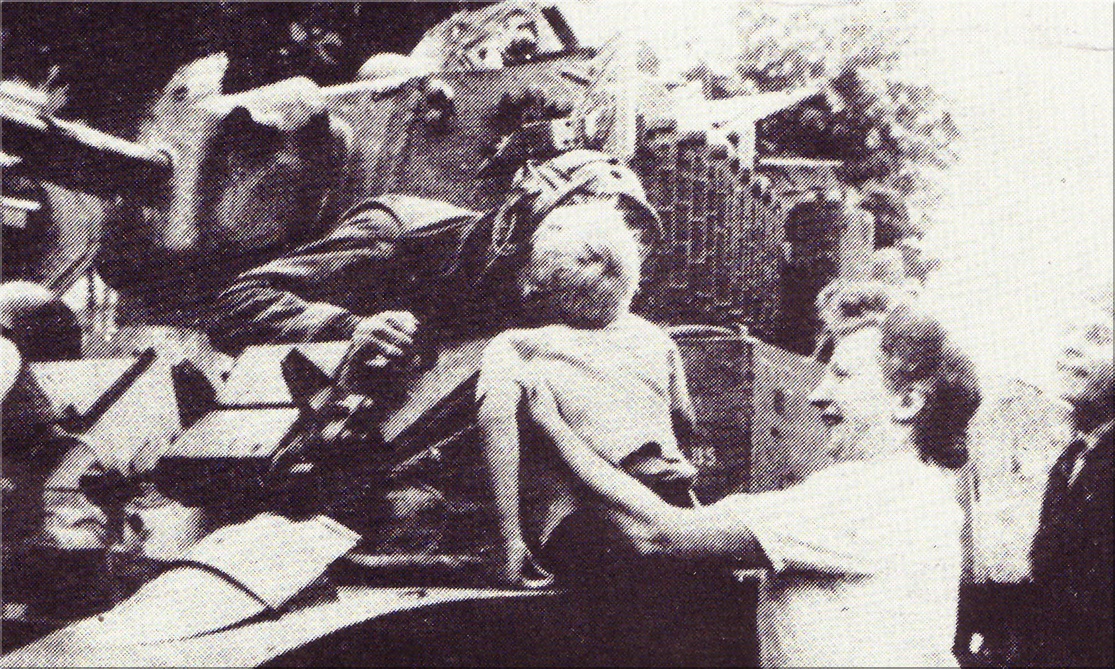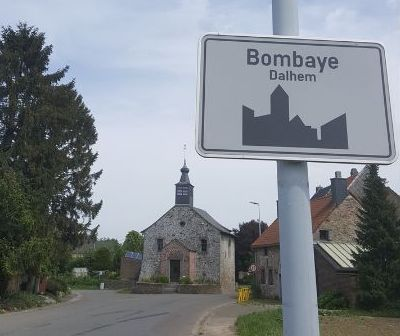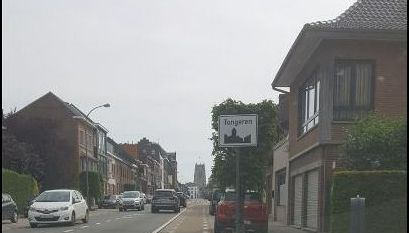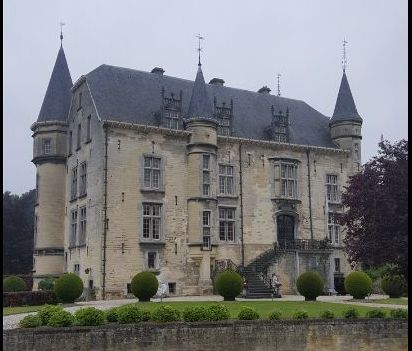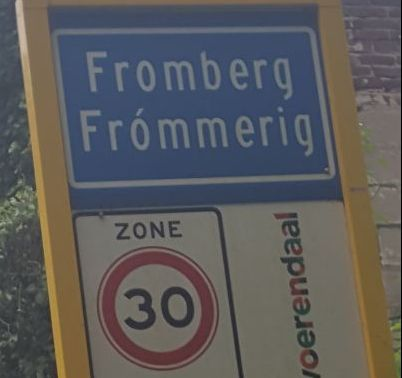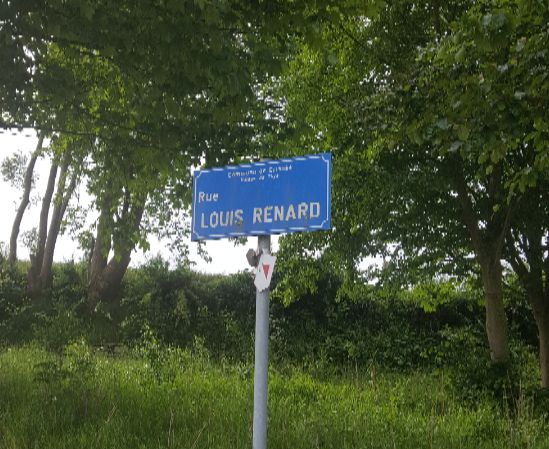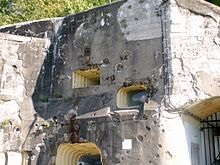First Day of Travel
Gayle and I made it to Brussels on May 10, and began our adventure to follow in Dad's war history. We got a small car at the airport - with a manual shift - and headed out! Driving on the autobahn at breakneck speed, it was exciting. We arrived at Sint Geertruid (in the Nederlands), very tired, at our rented flat in the late afternoon.
After checking in, we headed out for a light dinner. The waitress was great, sharing a book on the liberation of this area with us. Below are some photos from the book.
We arrived in Sint Geertrud, which is close to Noorbeek, The Netherlands. Noorbeek is a charming small community with a church steeple dominating the skyline, as is most of the communities in The Netherlands and Europe. In September, 1944, the US Army was marching across northern France after some difficult fighting in early summer. The going was easier now, with what those in the military call "light resistance." Even though light, the GIs were still suffering casualites, in firefights and under artillery and mortar fire.
The Germans were retreating back to Germany, to defend the Fatherland behind the West Wall (the Siegfried Line). The soldiers knew that more heavy fighting was in store for them.
We toured about a dozen of the many towns that were liberated by the 30th.
The 119th Regiment was given the honor of liberating Noorbeek, the first town liberated in The Netherlands. Below are some interesting photos of Noorbeek during the war.
Below is a quote from Kenneth Thayer, a soldier in Dad's regiment.
I was personally involved in the attack on Norbeek and remember it clearly.
The 12 September 1944 was the official date of our crossing of the Dutch border.
However, I was a member of a patrol which crossed the frontier on 11 September.
My company- Company "K" of the 3rd Battalion, 119th Infantry Regiment, 30th Infantry Division crossed an open field under enemy artillery fire and descended a short hillside to a flat field. We proceeded across the open field to, what we later learned was Norbeek.
I personally passed through a family backyard where there were beautiful birds, which I later was told were golden pheasants. We all pressed on to the main street to the town and turned to the right. I noticed that store fronts and other signs contained names with two vowels. I knew this to be of the Dutch language and shouted to my buddies, "Hey we must be in Holland."
Fort Eben-Emael
Fort Eben-Emael has a long history in Belgium. I remember Dad mentioning this Fort, so I know that he was there during the war.
Fort Eben-Emael was a key fort on the Muese River and the Albert Canal that protected Maastrict, and was part of the Maginot Line of defense against Germany. The fort is huge - totalling the same area as 140 football fields (soccer fields for us Americans). We visited the Fort, and hiked through what seemed like miles of tunnels.
The Germans, in their blitzkrieg strategy of a highly mobile offense, attacked Belgium in May, 1940 to open the way to France. The Germans were highly successful in their strategy of lightning war, even though the Belgians and the French had known the same strategy overran Poland in 1939. Ultimately, the Germans were able to conquer France and trap the British Expeditionary Force at Dunkirk with this war strategy.
Fort Eben-Emael was reputed to be impregnable at the time and the largest in the world. It was thought to be strong enough to hold off the German offensive, which would allow them to strenghthen their defenses.
Instead, in a brilliant commando raid, 85 Germans landed gliders on top of the huge fort and made the attack from within. Hitler himself came up with the strategy of using gliders. They were able to overcome the fort, using a new technology of "shaped charges" and aggressive commando tactics, including flamethrowers. The fort surrendered to them in a day. This loss further disheartened the Belgians that were losing to the Germans on most fronts. The Belgian government surrendered to the Germans within days.
Four years later, in September, 1944, the 30th Division of the US 1st Army was on the march through Belgium. The 30th Division took Maastrict and recaptured Fort Eben-Emael with limited German resistance. Dad's unit was a part of this recapture of the fort.
